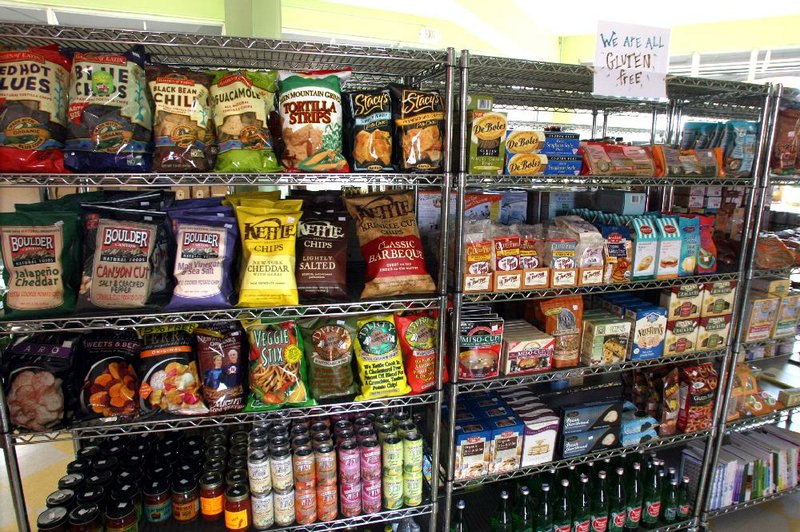AUSTIN, Texas - When was the last time you went to the grocery store and didn’t see the words “quinoa” or “gluten-free”?
Ten years ago, this wasn’t the case, but it only takes a few years for a food product (or trend) to go from practically unknown to nearly ubiquitous.
Slowly but surely, Greek yogurt takes over precious real estate in the dairy case, just a few aisles over from the growing selection of shelf-stable, nondairy milks, which were once relegated to the natural foods section.
So what products have gone from niche to normal in the past decade?
With input from supermarket guru Phil Lempert, the California-based analyst who is the undisputed king of grocery store geeks, here are a dozen best-sellers that weren’t even on our radar a decade ago.
Gluten-free: Shoppers are cutting gluten out of their diets for many reasons, not all of which are medically diagnosed. But no matter why people are avoiding gluten, the truth is that sales of gluten-free products have doubled in the past five years, and more manufacturers, including the stores, are jumping on board.
Ancient grains: As we’ve started to reject plain old wheat, old-world grains are enjoying a turn in the spotlight. Those nutrient-dense grains, including quinoa, spelt, amaranth, farro, teff, wheat berries, kamut and millet, also have the cachet of being more “authentic,” Lempert points out.
Grocery executives couldn’t have predicted just how much farmers markets would change shoppers’ expectations, even those who don’t actually go to the farmers market, and a big part of that is a push for all things “heritage” or “heirloom.”
Locavore culture has prompted even large-scale food manufacturers to put whatever artisan or heritage spin they can on products, like Vlasic Farmers’ Garden pickles packed in a Mason jar.
Kale: The K word (not Keurig, another grocery trend that’s here to stay) - love it or hate it - is one of the decade’s most notable trends, even though Lempert is one of the many who finds it inedible in its raw, mature form. (Grocery stores “used to use kale to line their deli displays,” he points out.)
Baby kale, however, isn’t just an offspring of a bigger leafy green trend, Lempert says. “I think we’re going to see other produce items that were not mainstream go mainstream but in their young form,” he says.
Greek yogurt: Unlike probiotics, which were the driving force of yogurt’s most recent wave of popularity, the key to Greek yogurt’s incredible success in the past few years is another P: protein.
With the help of every lowcarb diet ever invented, we’re on a real protein kick right now, Lempert says. Greek yogurt doesn’t just have twice the protein as regular yogurt, it’s thick and creamy in a way that commercial yogurts used to taste.
Nonpotato chips: Chips used to be made out of one of two things: potatoes and corn. But walk down the chip aisle today, and you’ll find chips made from beans and other legumes, such as lentils, sprouted grains and even popcorn and egg whites. We’re also seeing nonchip snacks, like pretzels and Cheez-Its, morphed into chip form.
Superfoods: With our new “food is medicine” mantra, Americans want superhero foods that can keep them healthy or cure what ails them. Although there’s no official definition or regulation of the term superfood, you’ve probably heard about them sometime in the past 10 years and then saw those ingredients, including acai, goji berries, mangosteen, chia, hemp and flax seeds or coconut oil, creep into other products on shelves, from granola and yogurt to juice and crackers.
Culinary-forward helper products: Hamburger Helper paved the way for a quickly growing segment of the grocery industry: prepared sauces, pre-measured spices, precut vegetables and marinated meats.
Hundreds of new products have come out to help get dinner on the table but still take advantage of consumers’ desire to try new recipes and feel as if they are in charge of what’s going on the dinner table.
Organics: Thanks to dozens of documentaries, books and TV reports about the environmental effects of the modern agriculture industry, sales of organics have tripled in the past decade, but Lempert predicts that we’re in a bubble that is bound to burst.
Even with more organic products on the market, Lempert says that there are signs that sales are starting to plateau, and with prices on organic meat and dairy expected to rise because of the ongoing drought in California, consumers will grow weary of the added expense.
High-caffeine drinks: Kombucha, the tart, cultured tea that’s teeming with good-for-you bacteria, has had a great 10 years, but it’ll never come close to eclipsing the expanding caffeinated drink category. “We are such an overcaffeinated country,” Lempert says, we’ll continue to see unnaturally caffeinated drinks, ranging from high-powered teas to the countless energy drinks on the market.
Midcalorie sodas and snacks: Gone is the heyday for fat-free and zero-calorie. You’ll still find those products, of course, but customers are figuring out, sometimes the hard way, that fat-free doesn’t mean “won’t make you fat,” because those products are often bulked up with sugar to compensate for flavor.
Innovations in food processing have given us more low-calorie sweetening options, such as the plant-based stevia, which is showing up in products across the supermarket.
Nondairy milks: Dairy milk consumption has been falling since the 1970s, and soy and almond milk used to be the only options for people who couldn’t (or didn’t want to) drink regular milk. But now shoppers have dozens of nondairy choices, including milks made from seeds, nuts and even those ancient grains.
Style, Pages 34 on 04/29/2014
